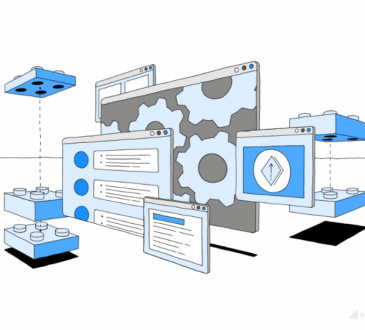
Introduction
In today’s digital era, data is constantly generated from multiple sources—websites, applications, sensors, devices, and more. Managing and processing this flood of data in real time is essential for businesses looking to make fast, data-driven decisions. That is where Apache Kafka steps in.
Apache Kafka has become popular for building real-time, scalable data pipelines. Whether you are dealing with IoT data, user activity logs, financial transactions, or social media streams, Kafka can help you ingest, distribute, and process data efficiently. In this blog post, we will explain what Apache Kafka is, why it is useful, and how you can set up a scalable data pipeline.
What is Apache Kafka?
Apache Kafka is an event streaming platform developed by LinkedIn. It is designed for high-throughput, fault-tolerant, and low-latency data streaming.
At its core, Kafka is a messaging system that allows data to move between systems in real time. It consists of four main components:
- Producers: Applications or services that publish data to Kafka topics.
- Topics: Named data streams that store messages.
- Consumers: Applications that read data from topics.
- Brokers: Kafka servers that manage topic storage and facilitate message exchange.
Kafka can scale horizontally, making it a go-to choice for businesses with large-scale data ingestion and streaming requirements.
Why Use Apache Kafka for Data Pipelines?
Before jumping into the setup, it is worth understanding why Kafka is such a powerful choice for modern data pipelines:
- Scalability: Kafka is scalable enough to handle millions of messages per second by distributing workloads across multiple brokers and partitions.
- Durability: Data in Kafka is stored on disk and replicated across brokers, ensuring fault tolerance.
- Flexibility: It supports real-time and batch processing, making it ideal for hybrid pipelines.
- Ecosystem Integration: Kafka integrates well with popular tools like Apache Spark, Hadoop, Flink, Elasticsearch, and cloud services like AWS, GCP, and Azure.
If you are enrolled in a Data Science Course in mumbai, understanding how streaming data works with tools like Kafka can elevate your ability to build real-time predictive models.
Step-by-Step: Setting Up a Scalable Data Pipeline with Apache Kafka
Let us walk through the essential steps in setting up a robust and scalable data pipeline using Kafka.
-
Define Your Pipeline Requirements
Before setting up Kafka, outline your use case and data flow requirements:
- What kind of data are you processing? (e.g., logs, metrics, transactions)
- What are your performance and latency expectations?
- Which systems will produce and consume the data?
- Do you need real-time analytics, batch processing, or both?
Clear goals will help determine the pipeline architecture, topic design, and tool integrations.
-
Install and Configure Apache Kafka
You can set up Kafka on-premise or use managed services like Confluent Cloud or Amazon MSK. For local or development setups, follow these steps:
Prerequisites:
- Java 8 or higher
- Apache ZooKeeper (used for managing Kafka brokers)
Steps:
- Download Kafka from the official Apache website.
- Start ZooKeeper:
bin/zookeeper-server-start.sh config/zookeeper.properties
- Start Kafka broker:
bin/kafka-server-start.sh config/server.properties
Kafka will now run locally and be ready to produce and consume messages.
-
Create Kafka Topics
Topics are the channels through which data flows. You can create a topic using the Kafka command-line tool:
bin/kafka-topics.sh –create –topic user-events –bootstrap-server localhost:9092 –partitions 3 –replication-factor 1
Choose the number of partitions based on your anticipated throughput and parallelism needs. More partitions allow higher parallelism in data processing.
-
Build Producers and Consumers
You will need to develop the services or scripts that send and receive messages.
Producer Example (Python with Kafka-Python):
from kafka import KafkaProducer
producer = KafkaProducer(bootstrap_servers=’localhost:9092′)
producer.send(‘user-events’, b’User logged in’)
producer.flush()
Consumer Example:
from kafka import KafkaConsumer
consumer = KafkaConsumer(‘user-events’, bootstrap_servers=’localhost:9092′)
for message in consumer:
print(f”Received: {message.value}”)
Depending on your tech stack, you can also use other languages like Java, Go, or Scala.
-
Integrate with Data Processing Tools
To build a complete data pipeline, you might want to connect Kafka to a processing engine like:
- Apache Spark: For real-time analytics and machine learning.
- Apache Flink: For stateful stream processing.
- Logstash or Kafka Connect: This is used to ingest data into Elasticsearch or databases.
For example, using Kafka Connect, you can sink data from Kafka to PostgreSQL, MongoDB, or cloud storage with minimal code.
-
Monitor and Scale
A scalable pipeline needs constant monitoring and the ability to scale efficiently.
Monitoring Tools:
- Confluent Control Center (for managed Kafka)
- Prometheus + Grafana
- Burrow (for consumer lag monitoring)
Scaling Tips:
- Add more partitions to a topic to increase parallelism.
- Add more brokers to increase throughput and resilience.
- Use consumer groups to distribute the load across multiple consumers.
-
Implement Security and Governance
For enterprise-grade pipelines, implement the following:
- Authentication (SASL, Kerberos)
- Authorisation (ACLs)
- Encryption (SSL/TLS)
- Schema validation using Confluent Schema Registry to ensure data consistency
Proper governance ensures your pipeline remains compliant and secure as it scales.
Real-World Use Cases of Kafka Data Pipelines
Companies like Netflix, LinkedIn, Uber, and Airbnb use Kafka. Everyday use cases include:
- Real-time user behaviour tracking on websites and apps.
- Fraud detection in financial services.
- Log aggregation for observability and debugging.
- IoT data ingestion in manufacturing and smart devices.
- Machine learning pipelines involve data flows through training, prediction, and feedback loops.
Mastering Kafka is a valuable skill for aspiring professionals. Many companies list it as a requirement in job postings for data engineers and machine learning engineers.
A comprehensive Data Scientist Course might include Kafka as part of its module on big data or pipeline orchestration.
Conclusion
Apache Kafka has become a backbone for building real-time, scalable, fault-tolerant data pipelines. Its high-throughput architecture and robust ecosystem make it an ideal choice for organisations that want to process and analyse data as it is generated.
Setting up a Kafka-based data pipeline involves understanding your requirements, installing and configuring Kafka, designing topics, coding producers and consumers, and integrating with processing and storage systems. With proper monitoring, scaling strategies, and governance, Kafka can handle almost any data streaming need.
Whether building the following big tech product or analysing sensor data in real time, Kafka gives you the power to move fast and scale effortlessly. For anyone pursuing a data-driven career, learning how to work with Kafka is not just beneficial—it is becoming essential.
Business Name: ExcelR- Data Science, Data Analytics, Business Analyst Course Training Mumbai
Address: Unit no. 302, 03rd Floor, Ashok Premises, Old Nagardas Rd, Nicolas Wadi Rd, Mogra Village, Gundavali Gaothan, Andheri E, Mumbai, Maharashtra 400069, Phone: 09108238354, Email: [email protected].




